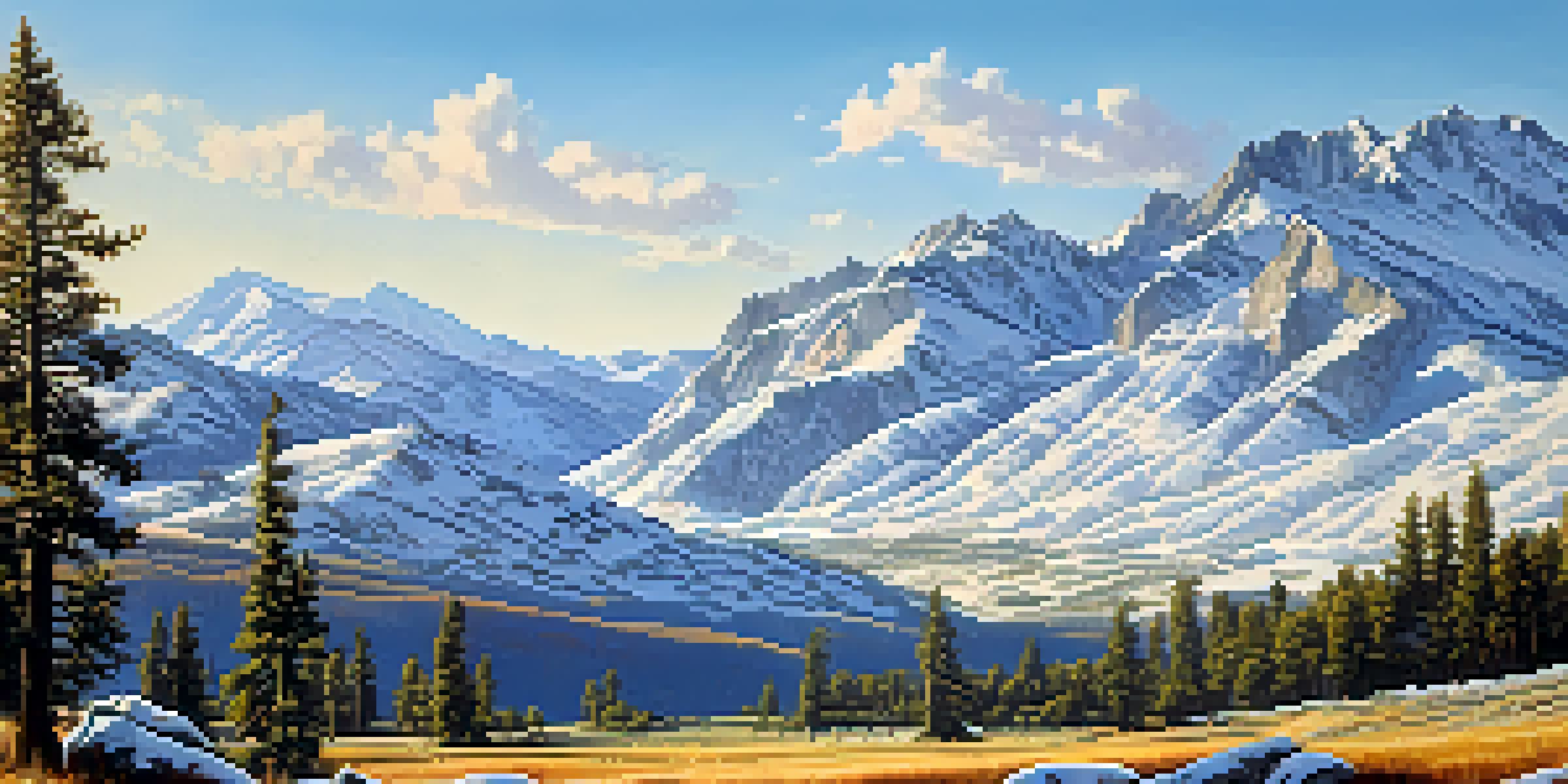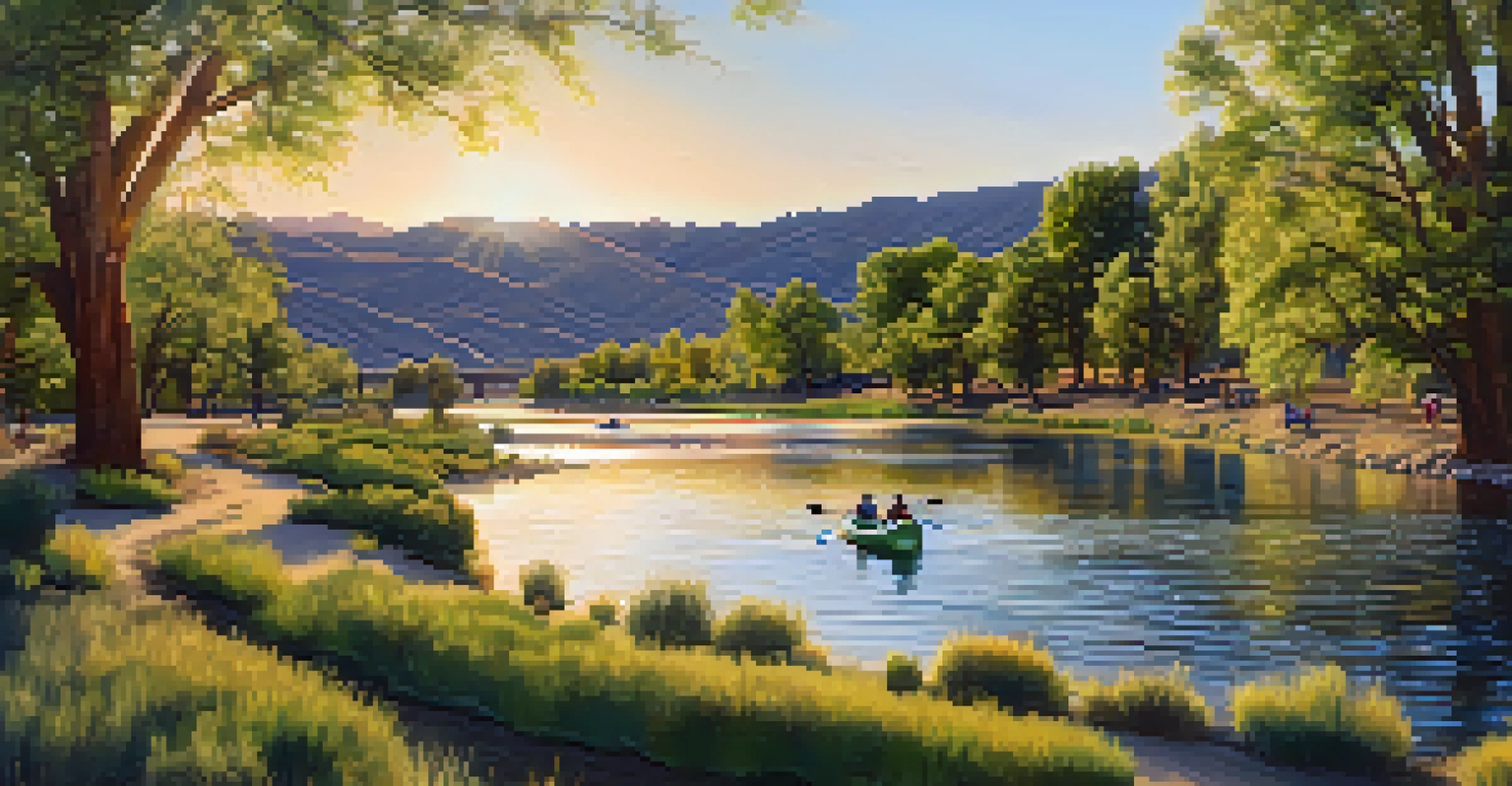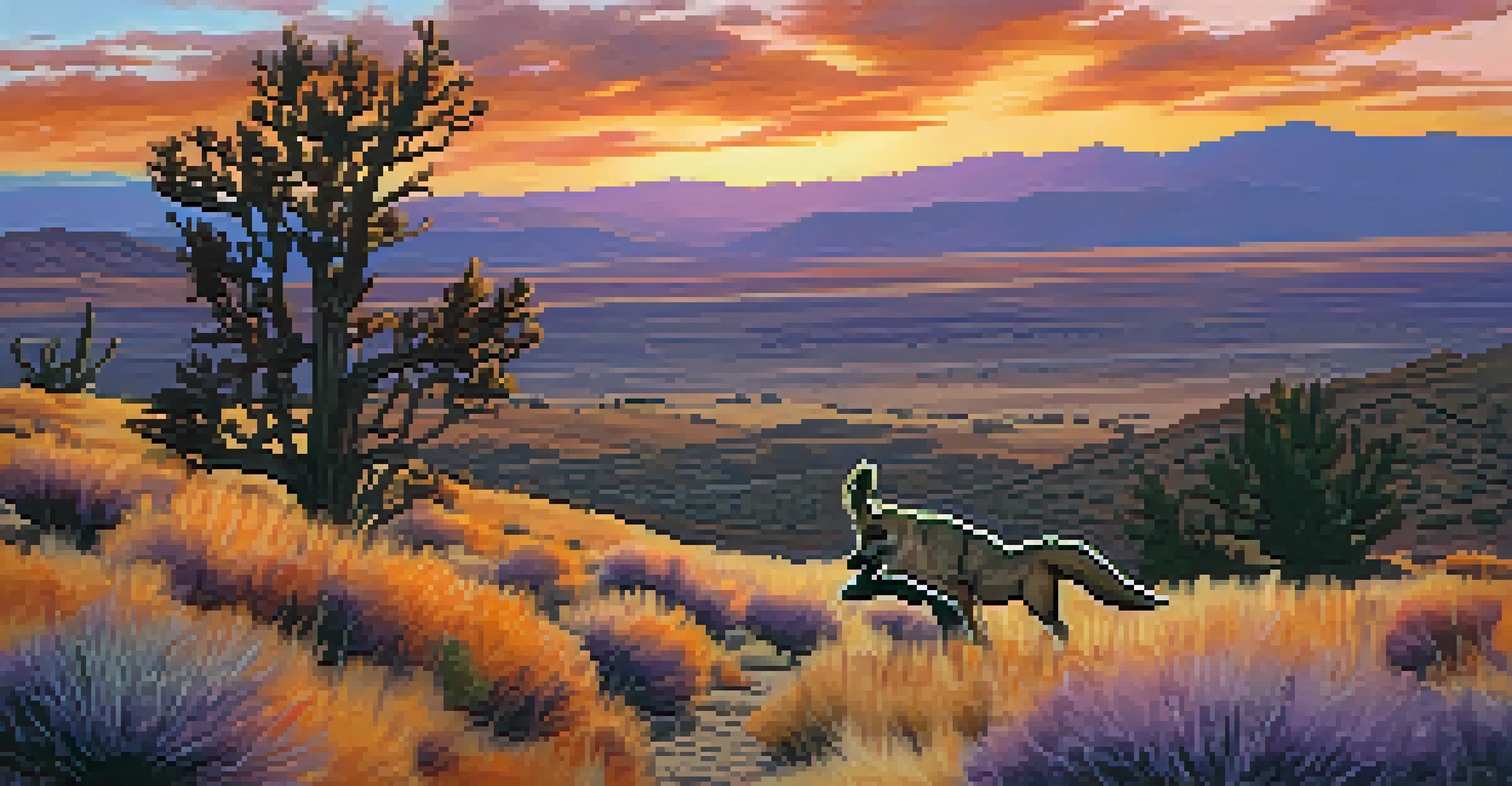Geographical Features of Reno: Mountains, Valleys, and More

The Majestic Sierra Nevada Mountains Surrounding Reno
The Sierra Nevada Mountains, towering to the west of Reno, are a breathtaking backdrop that shapes the region's climate and culture. These mountains are not just a pretty sight; they offer a plethora of outdoor activities, from skiing in the winter to hiking and mountain biking in the summer. Their rugged peaks, like Mount Rose, attract adventurers and nature lovers alike, providing stunning vistas and diverse ecosystems.
In every walk with nature one receives far more than he seeks.
As you venture into these mountains, you'll find that they are home to a variety of wildlife, including black bears, mule deer, and numerous bird species. The Sierra Nevada is not only a playground for thrill-seekers but also a sanctuary for those looking to connect with nature. The elevation changes create a unique blend of flora, from alpine meadows to dense forests, making every hike a new experience.
Moreover, the mountains play a crucial role in Reno's water supply, capturing snowmelt that feeds into the Truckee River. This river is vital for irrigation and recreation, linking the mountains to the valley below. In essence, the Sierra Nevada Mountains are not just geographical features; they are an integral part of Reno's identity and lifestyle.
The Truckee River: Life Source of the Reno Valley
Winding its way through the heart of Reno, the Truckee River is a lifeline for both the city and its inhabitants. It originates from Lake Tahoe and flows into Pyramid Lake, offering beautiful scenery and recreational opportunities along its banks. The river is a popular spot for fishing, kayaking, and leisurely strolls, making it a central hub for community activities.

The river's importance extends beyond recreation; it's a critical source of water for agriculture and urban areas. Historically, the Truckee has been vital for irrigation, helping to cultivate the fertile lands in the valleys surrounding Reno. This connection between the river and the region's agriculture showcases how geographical features can directly impact local economies and lifestyles.
Sierra Nevada: Adventure Awaits
The Sierra Nevada Mountains provide year-round outdoor activities, from skiing in winter to hiking in summer, enriching Reno's culture and lifestyle.
In addition to its practical uses, the Truckee River also provides a vital habitat for various fish species, making it a popular destination for anglers. As you explore the riverbanks, you'll often encounter families enjoying picnics or couples taking scenic walks, highlighting the river's role as a communal gathering place. The Truckee River truly embodies the spirit of Reno, blending nature's beauty with the city's vibrant life.
Reno's Valleys: Fertile Grounds for Growth
Surrounding the bustling city of Reno are several picturesque valleys that contribute to the area's agricultural richness. The valleys provide fertile soil and a favorable climate, making them ideal for growing a variety of crops, including alfalfa and grapes. This agricultural abundance significantly impacts the local economy and offers residents a taste of fresh, locally grown produce.
The mountains are calling and I must go.
The beauty of these valleys extends to their landscapes, characterized by rolling hills and sweeping pastures. As you drive through the region, you'll encounter charming farms and vineyards that contribute to Reno's rural charm. This blend of urban and agricultural life creates a unique atmosphere that appeals to both residents and visitors.
Additionally, the valleys serve as a transition zone between the mountains and the urban environment, offering stunning views of the Sierra Nevada. This geographical diversity attracts outdoor enthusiasts keen on exploring the vast landscapes, whether through hiking, biking, or simply enjoying the serene vistas. The valleys, with their rich agricultural heritage and stunning scenery, play a pivotal role in defining Reno's character.
The Role of Lake Tahoe in Reno's Geography
Just a short drive from Reno, Lake Tahoe stands as one of the most stunning geographical features in the region. Known for its crystal-clear waters and breathtaking mountain surroundings, Lake Tahoe is a popular destination for both locals and tourists. It offers a host of recreational activities, from boating and swimming in the summer to skiing in the winter, making it a year-round hotspot.
The lake's pristine environment is not only a playground for outdoor enthusiasts but also serves as a crucial ecological area. Its watershed is vital for maintaining water quality and supporting diverse wildlife. The balance between recreation and conservation is key to preserving the natural beauty of Lake Tahoe for future generations.
Truckee River: Community Lifeline
The Truckee River is essential for recreation and agriculture, serving as a vibrant gathering place that embodies the spirit of Reno.
Furthermore, the proximity of Lake Tahoe to Reno enhances the city's appeal as a recreational hub. Many residents take advantage of the lake's offerings, seamlessly blending urban life with outdoor adventure. This geographical relationship enriches the lifestyle of those in Reno, allowing them to enjoy both the vibrant city and the serene natural landscapes.
The Unique High Desert Landscape of Reno
While Reno is often associated with its mountainous terrains, it also boasts a unique high desert landscape that is just as captivating. This area is characterized by its arid climate, sagebrush-covered hills, and striking rock formations. The high desert offers a different kind of beauty, showcasing the resilience of nature in a seemingly harsh environment.
Exploring this landscape reveals a rich diversity of flora and fauna adapted to the desert conditions. You'll find resilient plants like cacti and wildflowers that bloom in the spring, creating bursts of color against the backdrop of browns and greens. Wildlife such as coyotes and rabbits can often be spotted, adding to the area's vibrant ecosystem.
Additionally, the high desert serves as a playground for adventurers seeking solitude and inspiration. Whether it's off-roading, mountain biking, or simply soaking in the expansive views, this landscape offers a contrast to the more populated areas of Reno. The high desert is a reminder of the beauty that lies in diversity, both in geography and in experiences.
The Influence of Climate on Reno's Geography
Reno's geographical features are heavily influenced by its unique climate, characterized by hot, dry summers and cold, snowy winters. This climate creates distinct seasonal changes that shape the landscape and the activities available throughout the year. For instance, the snow-capped mountains attract winter sports enthusiasts, while the warmer months invite hikers and outdoor lovers to explore the scenic trails.
The local climate also affects the types of vegetation that thrive in the area. In the higher elevations, you'll find coniferous forests, whereas the valleys and desert regions support more drought-resistant plants. This variety not only enhances the natural beauty of the region but also influences the local wildlife, creating diverse habitats.
Preserving Nature for Future Generations
Efforts to protect Reno's unique landscapes are crucial for maintaining the region's ecological balance and ensuring that its natural beauty endures.
Moreover, the climate plays a significant role in the overall lifestyle of Reno residents. The outdoor recreation options change with the seasons, allowing for a dynamic range of activities that keep the community engaged. Whether it's skiing in the winter or enjoying a summer festival by the river, the climate's influence on geography fosters a unique, vibrant culture in Reno.
Preserving Reno's Natural Landscapes for Future Generations
As Reno continues to grow, the importance of preserving its natural landscapes becomes increasingly vital. The city's unique geographical features are not only integral to its identity but also provide essential ecosystems that support wildlife and water resources. Community efforts and awareness are crucial in ensuring these areas are protected from overdevelopment and environmental degradation.
Local organizations and initiatives work tirelessly to promote conservation, advocating for sustainable practices that respect the natural environment. Educational programs aim to raise awareness about the significance of preserving Reno's mountains, valleys, and rivers, encouraging residents to engage in eco-friendly activities. This grassroots approach helps foster a culture of stewardship within the community.

Ultimately, preserving Reno's geographical features is about securing a legacy for future generations. By valuing and protecting these landscapes, we ensure that the beauty and resources of Reno remain a source of pride and enjoyment for years to come. In this way, the community can thrive both now and in the future, maintaining the balance between urban life and the natural world.